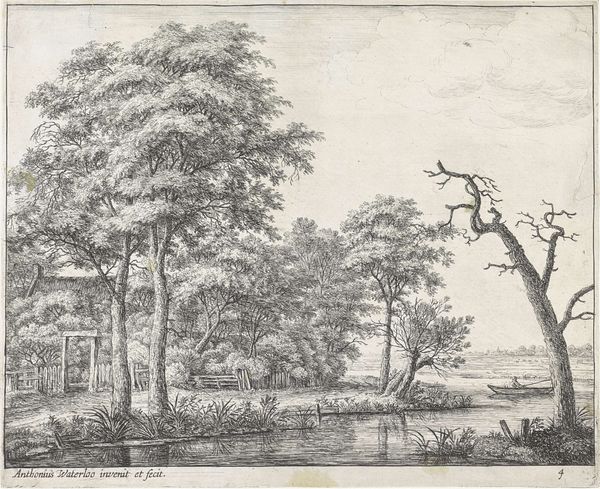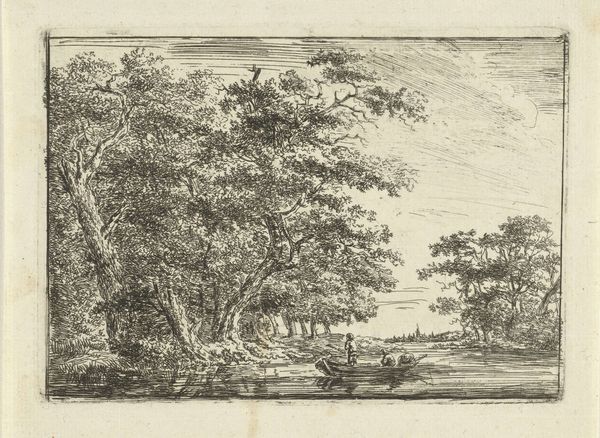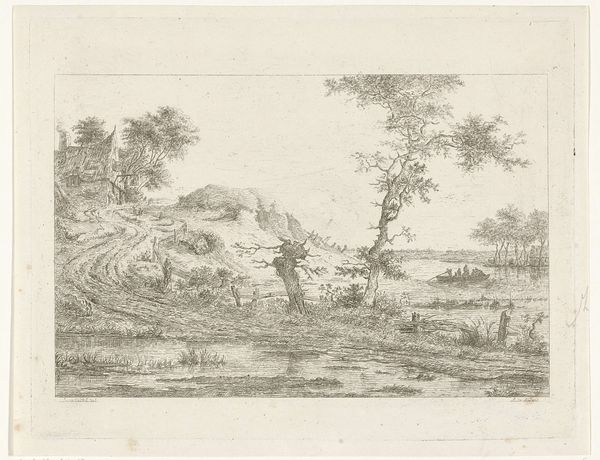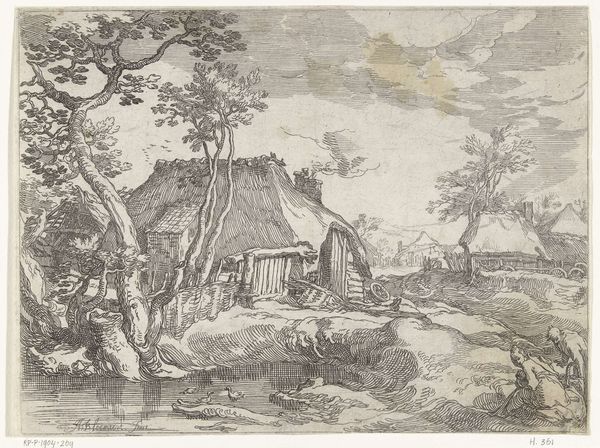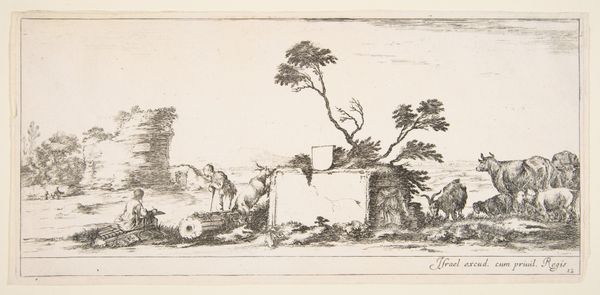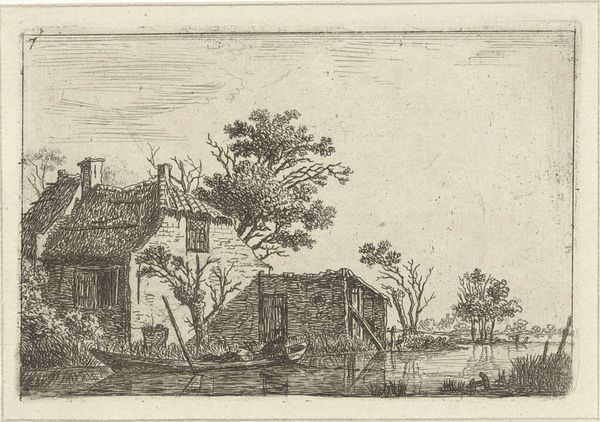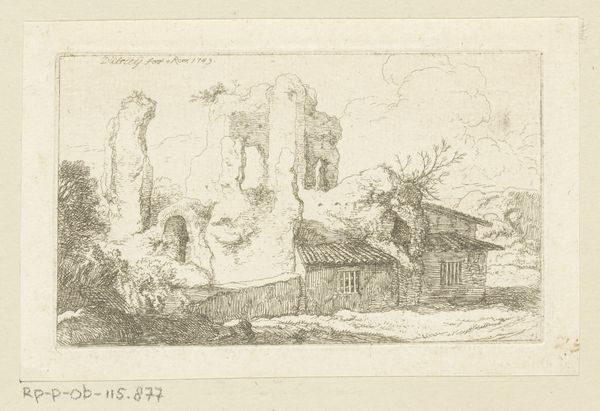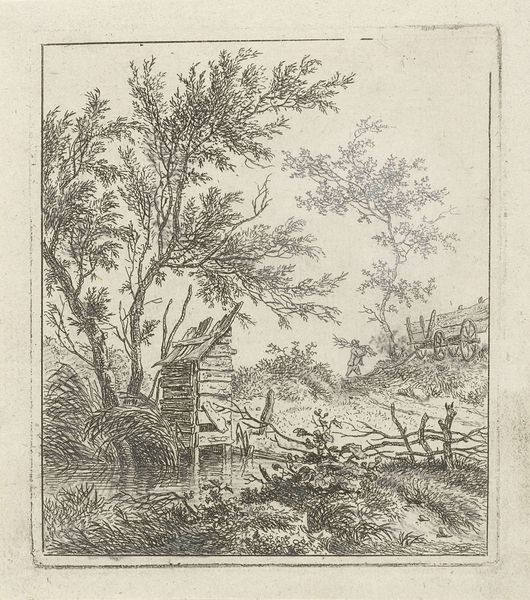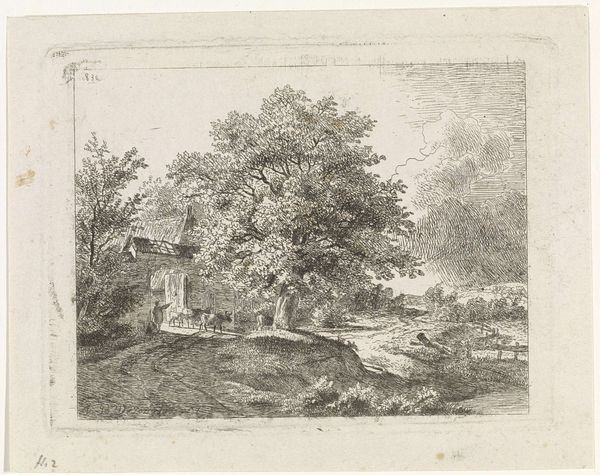
drawing, print, etching, paper, ink
#
drawing
# print
#
pen sketch
#
etching
#
pencil sketch
#
landscape
#
paper
#
ink
#
romanticism
#
genre-painting
Dimensions: height 98 mm, width 145 mm
Copyright: Rijks Museum: Open Domain
Editor: Here we have Hermanus Fock's "Two Men by a River," made between 1781 and 1822 using etching, ink and paper. It feels very small and intimate, almost like a stolen glance at a private moment. What do you make of its depiction of the common man in nature? Curator: Well, seeing this work through a historical lens, I find it interesting how Fock uses a seemingly simple genre scene to subtly engage with ideas about nature, labor, and class that were circulating at the time. Remember, the late 18th and early 19th centuries witnessed significant shifts in social and political landscapes. The burgeoning concept of the "picturesque" celebrated idealized rural life, but it often overlooked the realities of the working class. Do you see how the men are positioned almost within, or dominated by, the landscape? Editor: I do notice that. They’re not grand or heroic figures; they almost blend in. Were such scenes considered radical at the time, compared to depictions of aristocracy? Curator: Not necessarily radical, but they represented a growing interest in everyday life. Artists like Fock were participating in a larger cultural conversation about the value of different kinds of work and the relationship between people and the environment. Think about how this print might have been consumed—perhaps by a member of the growing middle class, keen to define themselves through engagement with new visual representations of "ordinary" people. What does this suggest about the power dynamics involved in viewing art? Editor: I guess it shows how art can play a part in shaping how different groups see themselves, or are seen by others. Thanks for pointing that out, it definitely gives me a new way to appreciate its nuances. Curator: Absolutely. It’s a good reminder that art is never just about aesthetics; it’s a reflection of its time and has the power to shape cultural values.
Comments
No comments
Be the first to comment and join the conversation on the ultimate creative platform.

